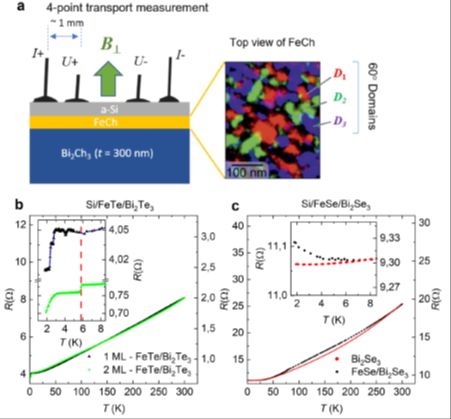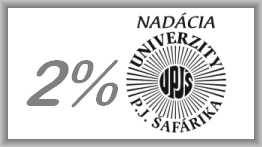Javy na rozhraní dvoch rôznych materiálov sa môžu výrazne odlišovať od vlastností pôvodných materiálov. V našej poslednej práci sme ukázali, že na rozhraní topologického izolátora Bi2Te3 s hrúbkou 300 nm a nesupravodivého materiálu FeTe s jedno a dvojatómovou hrúbkou je pozorovaný supravodivý stav. Opačný prípad je pozorovaný v štruktúre pozostávajúcej z topologického izolátora Bi2Se3 a supravodivého materiálu FeSe, kde je vplyvom prítomnosti rozhrania týchto dvoch materiálov supravodivosť v FeSe potlačená. Aby bolo možné využiť štruktúru FeTe/Bi2Te3 v praktických aplikáciách je potrebné zabezpečiť ochranu pred vysokou reaktívnosťou FeTe na vzduchu. Z tohto dôvodu bolo potrebné otestovať rôzne ochranné vrstvy na povrchu FeTe, ktoré by neovplyvnili samotný supravodivý stav. Ako funkčné riešenie sa ukázalo pokrytie FeTe amorfným kremíkom Si. Supravodivoť výslednej štruktúry Si/FeTe/Bi2Te3 bola charakterizovaná pomocou merania elektrického transportu. Pomocou štruktúrnej analýzy bolo zistené, že FeTe nevytvára na povrchu Bi2Te3 súvislú vrstvu, ale ostrovy rôznych veľkostí. Analýza transportných vlastností ukázala, že v závislosti na veľkosti supravodivých ostrovov pozorujeme rôzne typy supravodivých stavov, ktoré sa vyznačujú rôznou teplotou prechodu do supravodivého stavu.
Štúdia bola publikovaná v prestížnom časopise nature partner journal 2d materials and applications [V. Tkáč et al., npj 2D Materials and Applications 8 (2024) 52] (https://doi.org/10.1038/s41699-024-00480-x), ktorý má impaktový faktor 9.2.
Superconductivity at the interface between ultrathin FeTe islands and the topological insulator Bi2Te3
The phenomena at the interface of two different materials can differ significantly from the properties of the original materials. In our last work, we showed that a superconducting state is observed at the interface of a topological insulator Bi2Te3 with a thickness of 300 nm and a non-superconducting material FeTe with a thickness of one and two atomic layers. The opposite case is observed in a structure consisting of a topological insulator Bi2Se3 and a superconducting material FeSe, where superconductivity in FeSe is suppressed due to the presence of the interface of these two materials. In order to be able to use the FeTe/Bi2Te3 structure in practical applications, it is necessary to provide protection against the high reactivity of FeTe in air. For this reason, various protective layers on the FeTe surface were tested so as not to affect the superconducting state itself. Covering FeTe with amorphous silicon Si turned out to be a functional solution. The superconductivity of the resulting Si/FeTe/Bi2Te3 structure was characterized by measuring electrical transport. Structural analysis revealed that FeTe does not form a continuous layer on the surface of Bi2Te3 but islands of different sizes. Analysis of the transport properties showed that, depending on the size of the superconducting islands, we observe various types of superconducting states, which are characterized by different transition temperatures to the superconducting state.
The study was published in the prestigious journal nature partner journal 2d Materials and Applications [V. Tkáč et al., npj 2D Materials and Applications 8 (2024) 52] (https://doi.org/10.1038/s41699-024-00480-x), which has an impact factor of 9.2.

















